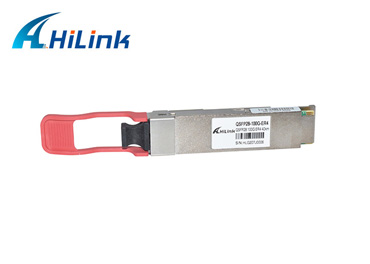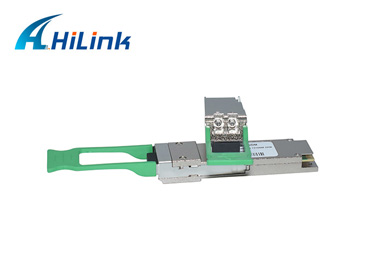Types of 100G Optical Transceivers
Dec. 16, 2022
As data centres grow, more and more of them are facing the problem of upgrading their network infrastructure. Most data centres are considering upgrading to 100G Ethernet networks, and 100G will become the mainstream trend for future network development. There is also a growing demand for 100G optical modules in the communications industry. 100G fibre optic transceivers are available in a wide range of models, including CXP, CFP and QSFP28. Before you buy or design a solution, you should understand the types and features of these different 100G fibre transceivers. This article will detail the 3 models, CXP, CFP and QSFP28, as well as common 100G optical module connectors.
What is the 100G standard?
The more common 100G interface standards are SR4 (Short Reach), SR10, LR4 (Long Reach), ER4, ZR4. All of these standards have electrical signals defined as 1010G. for LR4 and ER4, the external optical signal is 425G. where SR4 and SR10 are mainly used for short distance data transmission, with a maximum transmission distance supporting 100 metres. The LR4, ER4 and ZR4 are usually used for long distance transmission. 10km is the maximum transmission distance for LR4, 40km for ER4 and 80km for ZR4.
100G 40KM QSFP28 ER4
Types of 100G optical modules
The main types of 100G optical modules currently on the market are CXP optical modules, CFP/CFP2/CFP4 optical modules and QSFP28 optical modules. The most popular optical module model on the market today is the QSFP28 optical module.
QSFP28 Optical Module
The 100G QSFP28 optical module, known as the Quad Small Form-factor Pluggable, is designed with four independent transmission channels, each with a transmission rate of 25G and a transmission rate of 100G after aggregation. 100G QSFP28 has a smaller form factor than the CFP4 optical module and has significant advantages for high density data transmission. The mainstream QSFP28 optical modules currently available in the market include 100GBASE-PSM4, 100GBASE- SR4, 100GBASE- LR4, 100GBASE-CWDM4. As 100G QSFP28 optical modules become more popular in the market and the technology matures, their cost will increase. The lower ones are the best choice for most future data centres.
100G QSFP28 CWDM4
CXP optical module
The letter C in CXP stands for 12 and is represented in hexadecimal. 12 means that the CXP module is a 12-way full duplex channel optical module with a 12x10G transceiver design with 12 transmit channels and 12 receive channels, providing transmission rates of up to 120G. The CXP transceiver is easy to implement, supports hot swapping and has a smaller form factor than the CFP. Supporting 100GBASE-SR10 multimode short-haul transmission, interchangeable with CFP/CFP2/CFP4, QSFP28 optical modules under the SR10 standard, the CXP 100G optical modules support a maximum transmission distance of 100m for OM3 cables and 150m for OM4 cables. data centre networks, high performance computing networks, enterprise core aggregation and service provider transport applications.
CFP Series Optical Transceivers (CFP / CFP2 / CFP4)
100G CFP optical modules are oversized pluggable optical modules, where the letter C is a Roman numeral representing the number 100 (centum). the CFP and CFP2 and CFP4 optical modules are different in size, with the CFP2 being half the size of the CFP and the CFP4 optical module being half the size of the CFP2, and can support 40/100G. the width and power consumption of the CFP4 optical CFP4 transceiver is a significant improvement over the previous two generations A big improvement as it is smaller and better suited to 100G Ethernet, which requires higher density.
Can different 100G optical modules be interconnected?
The same type of 100G optical module can be interconnected with other modules. For example, the CXP can be interconnected with the CXP and the CFP-SR10 can be interconnected with the CFP-SR10. When communication needs to be established between different types of 100G transceivers, they need to have the same standard and interface type. Another example is that the CFP/CFP2/CFP4 can transmit with the QSFP28 under the same signalling system and interface type. A CFP2-LR4 with a duplex LC interface can communicate with a QSFP28-LR4 under a duplex LC interface. 100G CXP transceivers can only interconnect with CFP/CFP2/CFP4/QSFP28 optical transceivers when using the SR10 standard. when interconnecting a CXP module with a CFP2-SR10 module, the CXP must mask off the CXP edges 1, 12 13, 24.













